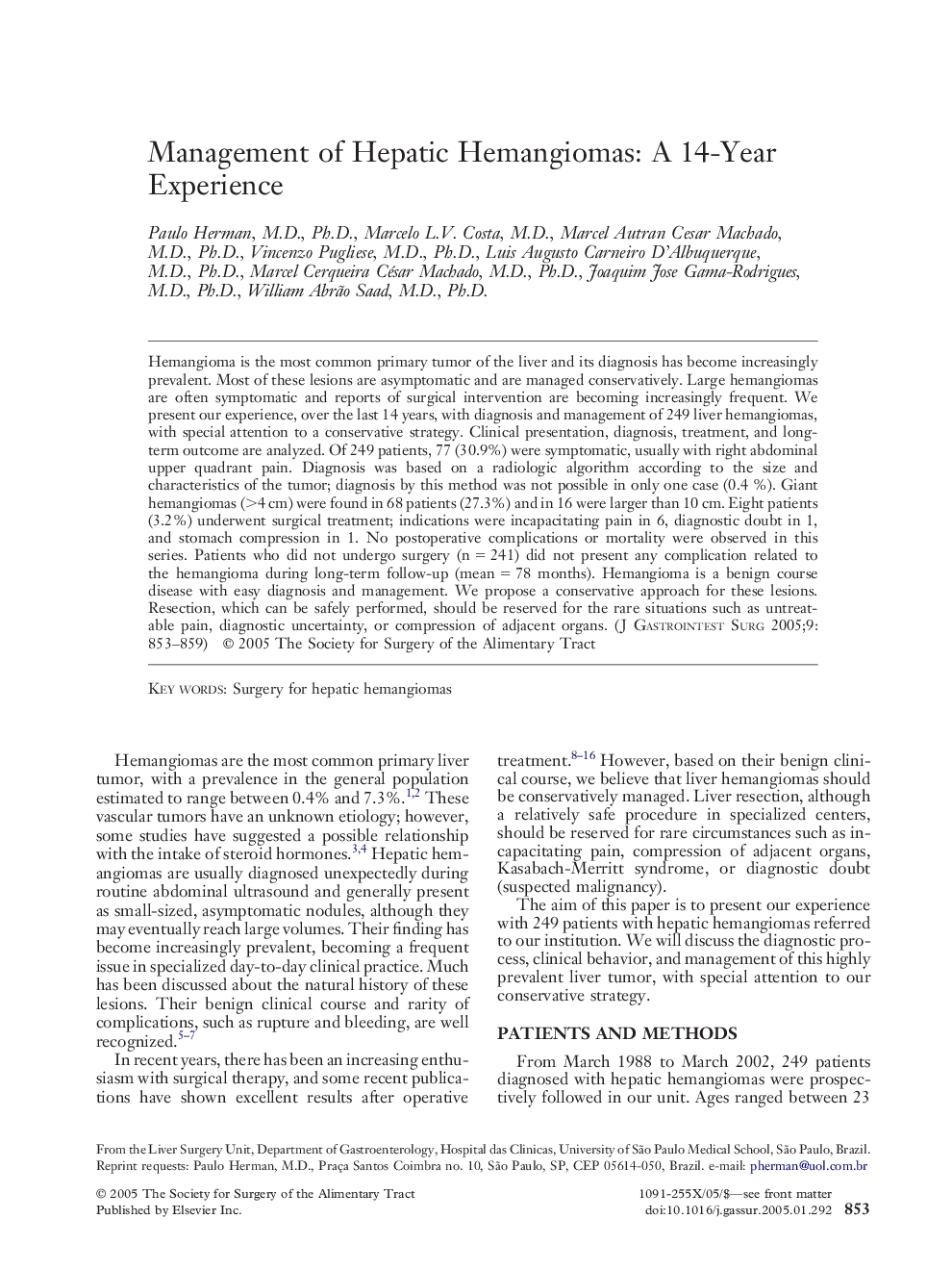| Article ID | Journal | Published Year | Pages | File Type |
|---|---|---|---|---|
| 9401370 | Journal of Gastrointestinal Surgery | 2005 | 7 Pages |
Abstract
Hemangioma is the most common primary tumor of the liver and its diagnosis has become increasingly prevalent. Most of these lesions are asymptomatic and are managed conservatively. Large hemangiomas are often symptomatic and reports of surgical intervention are becoming increasingly frequent. We present our experience, over the last 14 years, with diagnosis and management of 249 liver hemangiomas, with special attention to a conservative strategy. Clinical presentation, diagnosis, treatment, and long-term outcome are analyzed. Of 249 patients, 77 (30.9%) were symptomatic, usually with right abdominal upper quadrant pain. Diagnosis was based on a radiologic algorithm according to the size and characteristics of the tumor; diagnosis by this method was not possible in only one case (0.4 %). Giant hemangiomas (>4 cm) were found in 68 patients (27.3%) and in 16 were larger than 10 cm. Eight patients (3.2%) underwent surgical treatment; indications were incapacitating pain in 6, diagnostic doubt in 1, and stomach compression in 1. No postoperative complications or mortality were observed in this series. Patients who did not undergo surgery (n = 241) did not present any complication related to the hemangioma during long-term follow-up (mean = 78 months). Hemangioma is a benign course disease with easy diagnosis and management. We propose a conservative approach for these lesions. Resection, which can be safely performed, should be reserved for the rare situations such as untreatable pain, diagnostic uncertainty, or compression of adjacent organs.
Related Topics
Health Sciences
Medicine and Dentistry
Surgery
Authors
Paulo M.D., Ph.D., Marcelo L.V. M.D., Marcel Autran Cesar M.D., Ph.D., Vincenzo M.D., Ph.D., Luis Augusto Carneiro M.D., Ph.D., Marcel Cerqueira César M.D., Ph.D., Joaquim Jose M.D., Ph.D., William Abrão M.D., Ph.D.,
